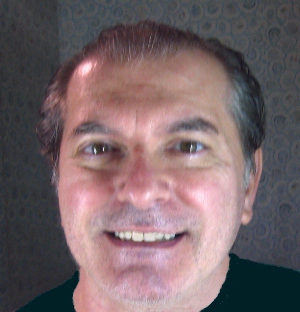Vascular Cleanse
 4th Day Niacin Flush on Skin 4th Day Niacin Flush on Skin
Obtain Ultimate Cardiovascular Health With Vascular Cleanse! Daniel Chapter One views a healthy cardiovascular system as optimal to health. What is Vascular Cleanse? Vascular Cleanse is Vitamin B-3 (niacin) with Vitamin C combined in our proprietary base. Why Vascular Cleanse? When lipids - fats and cholesterols - build up in the blood vessels, there is an increased chance of disease. A build-up of lipids can lead to a variety of illnesses i.e. diabetes, hypertension (high blood pressure), arteriosclerosis, acidosis, ketosis, fatty liver disease and capillary blockage. These may lead to further problems for your vascular system such as stroke, arrhythmias, heart attack and even death. The desired goals of Vascular Cleanse The desired goal of Vascular Cleanse is to remove the fats from the vascular system, especially those that have accumulated in the tiny capillaries throughout the body. Blocked capillaries impede cardiovascular health and jeopardize heart health. How does Vascular Cleanse Work? Vascular Cleanse allows for the oxidation (burning) of lipids, fats, triglycerides and cholesterol. As a result you may initially experience some symptoms. The oxidation of lipids by Vascular Cleanse produces heat and energy, a process known as thermogenesis. This chemical reaction may cause the skin to turn red, even blotchy in appearance. This is normal as the capillaries in the skin dilate, expand, so that the heat created from the burning of these fats can be released into the air. Some individuals may also experience itching as well. This is also a normal response that is short lived and may never occur again. This response is simply due to the normal nerve sensations and from enhanced circulation. How should Vascular Cleanse be taken? Take 1 Vascular Cleanse Capsule daily until the flush (desired reaction) ceases. Then continue daily for one week. If there is a large accumulation of lipids in your vascular system the flush may still continue after one week. If this is so then you should continue until the flush no longer occurs. At this time you may increase the daily intake to 2 capsules and follow the same procedures as you did while taking one or go to maintenance levels. It is important to know how you are responding to the Vascular cleanse. Many other companies want to sell you products and therefore sell you niacinamide and/or flush-free niacin. This does not allow you to assess your cardiovascular condition. The so-called side effects are really important desired reactions that allow you to assess your vascular condition. Once you have taken Vascular Cleanse for an initial phase you can start a maintenance program that is to your liking. Most individuals will use 1 to 2 Vascular Cleanse capsules per week to prevent future capillary lipid blockage. Health Conditions What health conditions require special emphasis on vitamin B3?Vitamin B3 may play a role in the prevention and/or treatment of the following health conditions:- Alzhiemer's disease and age-related cognitive decline (August 23, 2004)
- Cataracts
- Convulsions
- Depression
- Diabetes
- Gout
- Hallucinations
- Headaches
- HIV/AIDS
- Hyperactivity
- Hypothyroidism
- Inflammatory bowel disease
- Insomnia
- Intermittent claudication
- Menstrual pain
- Multiple sclerosis
- Osteoarthritis
- Pellagra
- Rheumatoid arthritis
- Smelling disorders
- Taste disorders
- Vertigo
Niacin Protects against Alzheimer's Disease and Age-related Cognitive Decline Niacin (vitamin B3) is already known to lower cholesterol. Now, research published in the August 2004 issue of the Journal of Neurology, Neurosurgery and Psychiatry indicates regular consumption of niacin-rich foods also provides protection against Alzheimer's disease and age-related cognitive decline. Researchers from the Chicago Health and Aging Project interviewed 3,718 Chicago residents aged 65 or older about their diet, then tested their cognitive abilities over the following six years. Those getting the most niacin from foods (22 mg per day) were 70% less likely to have developed Alzheimer's disease than those consuming the least (about 13 mg daily), and their rate of age-related cognitive decline was significantly less. In addition to eating the niacin-rich foods, another way to boost your body's niacin levels is to eat more foods rich in the amino acid tryptophan. Your body can convert tryptophan to niacin, with a little help from other B vitamins, iron and vitamin C. Foods high in tryptophan include shrimp, crimini mushrooms, yellowfin tuna, halibut, chicken breast, scallops, salmon, turkey and tofu. As you can see, several foods rich in tryptophan provide two ways to increase niacin levels as they are also rich in the B vitamin.(august 23, 2004) http://www.whfoods.com/genpage.php?tname=nutrient&dbid=83 http://www.danielchapterone.com http://www.clevelandclinicmeded.com/diseasemanagement/endocrinology/flushing/flushing.htm |